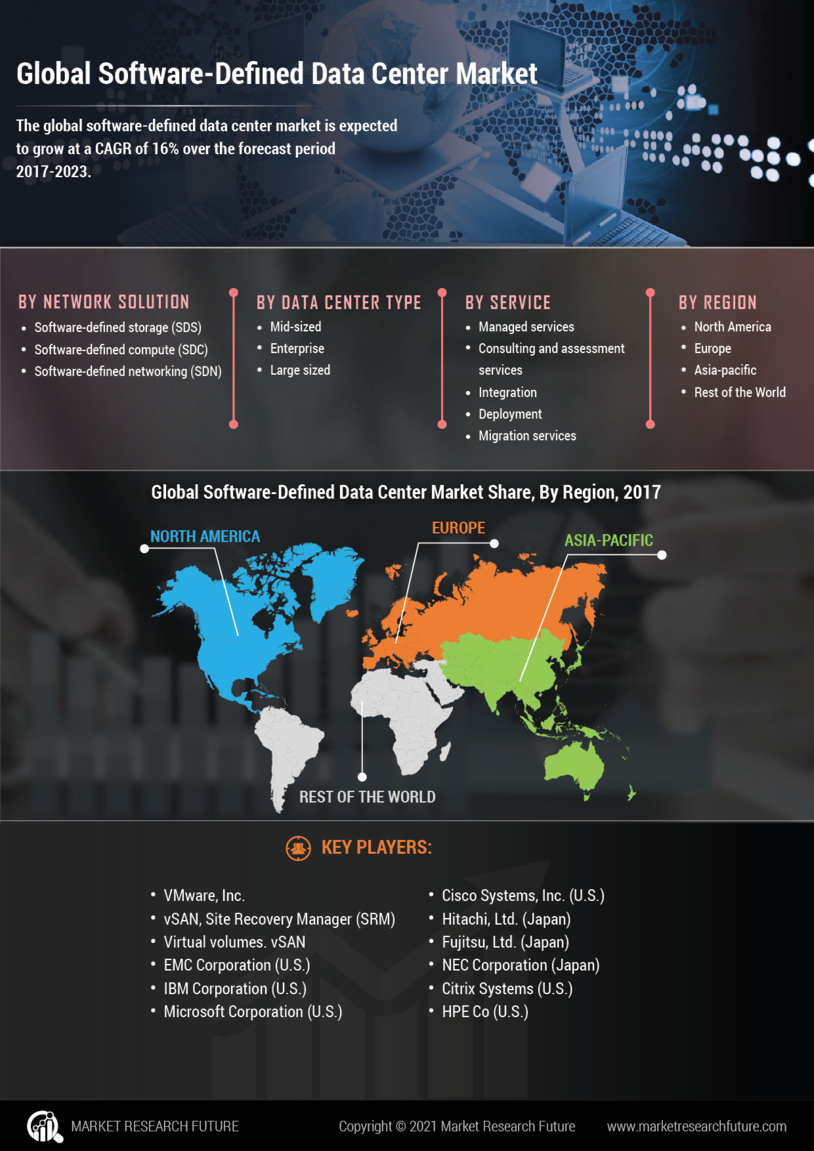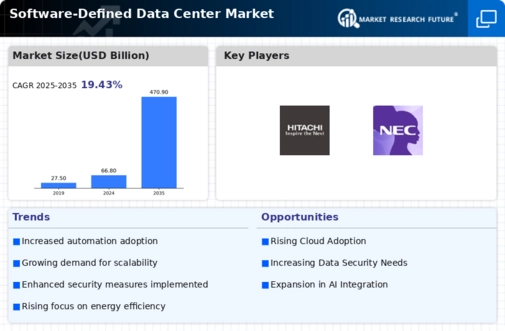Leading market players invested heavily in research and Development (R&D) to scale up their manufacturing units and develop technologically advanced solutions, which will help the Software Defined Data Center Market grow worldwide. Market participants are also undertaking various organic or inorganic strategic approaches to strengthen and expand their global footprint, with significant market developments including new product portfolios, contractual deals, mergers and acquisitions, capital expenditure, higher investments, and strategic alliances with other organizations. Businesses are also coming up with marketing strategies such as digital marketing, social media influencing, and content marketing to increase their scope of profit earnings.
The Software-Defined Data Center industry must offer cost-effective and sustainable options to survive in a highly fragmented and dynamic market climate.
Manufacturing locally to minimize operational expenses and offer aftermarket services to customers is one of the critical business strategies organizations use in the global Software Defined Data Center industry to benefit customers and capture untapped market share and revenue. The Software-Defined Data Center industry has recently offered significant advantages to the Information and Communications Technology industry. Moreover, more industry participants are utilizing and adopting cutting-edge technology has grown substantially.
Major players in the Software-Defined Data Center market, including VMware Inc. (US), EMC Corporation (US), IBM Corporation (US), Microsoft Corporation (US), Cisco Systems, Inc. (US); Hitachi, Ltd. (Japan), Fujitsu, Ltd. (Japan), NEC Corporation (Japan), Citrix Systems (US), HPE Co (US) are attempting to expand market share and demand by investing in R&D operations to produce sustainable and affordable solutions.
IBM (International Business Machines) is a computer, technology, and IT consulting firm headquartered in the United States. It is the world's largest technology business and the second most valuable worldwide brand. It produces and sells software and computer components, web hosting, and consulting services in fields including mainframe systems and nanotechnology. On June 16, 1911, Charles Ranlett Flint and Thomas J. Watson Sr. created the corporation, which is located in Armonk, New York. IBM Corporation introduced an upgraded storage solution in April 2021 that improved data accessibility and availability throughout the hybrid cloud.
The company expects to release innovative container-native SDS technologies to help enterprises boost data availability throughout complex hybrid clouds for better company efficiency and resilience.
Cisco Systems, Inc. is an IT and communications firm that designs, manufactures, and sells Internet Protocol-based networking devices and services. The company operates in three regional segments: North America, EMEA, and Asia-Pacific. Switches, NMI & Modules, Routers, Optical Communication, Network Points, Next-Generation Firewalls, Sophisticated Malware Protection, VPN Clients, and Web Security are among its product categories. Sandra Lerner and Leonard Bosack formed the firm on December 10, 1984, headquartered in San Jose, California. Cisco and Microsoft strengthened their networking agreements to make it easier for IT to directly link branches to Microsoft Azure Virtual WAN.
Cisco SD-WAN is going to be hosted in Microsoft Azure.


















Leave a Comment